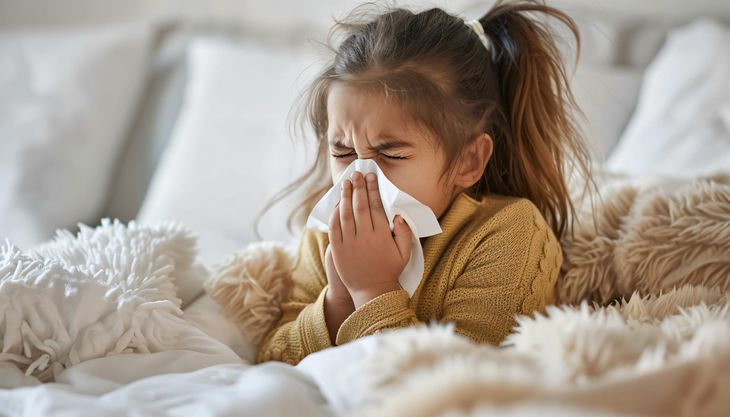The cold and long winter weather last year caused an increase in the circulation of various respiratory viruses. At the same time, the low vaccination rate worsened the situation.
The cold and long winter last year caused an increase in the circulation of various respiratory viruses.
The last winter, much colder and longer than expected, had a significant impact on the respiratory healthcausing a Increase in infections that persist even with the arrival of spring and the recurrence of cough. In this season, where generally allergies predominatethe prolongation of low temperatures promoted the circulation of various respiratory viruses.
The content you want to access is exclusive for subscribers.
Among the viruses that most affected the population is the respiratory syncytial virus (RSV). According to the National Epidemiological Bulletin (BEN) published by the Ministry of Health, “96% of the cases registered to date in 2024 occurred from epidemiological week 20, reaching their peak between weeks 23 and 30.” Although infections have decreased since then, they are still being detected more than 100 cases per week.


The Allergy and Immunology specialist and president of the Foundation for the Study of Asthma and Other Allergic Diseases (Fundaler), Pablo Moreno, explained that “The prolonged cold kept the virus circulating highwhich normally decreases with increasing temperatures.” This situation is worryingespecially for the risk groups such as older adults and people with chronic diseaseswho are the most vulnerable to RSV.
girl cough

Risk groups such as older adults and people with chronic diseases are the most vulnerable.
Low temperatures prolonged viral circulation
The Argentine Association of Respiratory Medicine (AAMR) warned about Numerous peaks of respiratory infections since Maywith respiratory syncytial virus and influenza A being the most prevalent. The most affected cities were Buenos Aires, Rosario and Cordoba. Most cases were of viral originwhich generated prolonged symptoms such as cough and congestionwhich in some cases lasted more than a month.
Laura Pulido, pulmonologist and coordinator of the AAMR Respiratory Infections Section, highlighted that “this winter was exceptional not only for its duration, but for the persistent low temperaturesThis facilitated the spread of viruses and, together with the lack of adequate ventilation, respiratory infections spread rapidly.
The overcrowded conditions and lack of ventilated spaces due to the cold created the ideal scenario for viruses to spread rapidly in communities. In addition, the low vaccination rate In recent years, this has contributed to many people being left unprotected against respiratory diseases such as influenza and pneumococcus. Pulido pointed out that The aggressiveness of respiratory viruses this year was greater than usualand it was not uncommon to observe cases of co-infections, especially in children. Multiple infections further complicated the clinical pictures, which required greater medical control in the pediatric emergency rooms.
Allergies and viruses: a dangerous combination in spring
With the arrival of spring, instead of disappearing, respiratory problems intensified due to the seasonal allergies. Moreno indicated that “the pollen and mites present at this time of year aggravate the symptoms in people with rhinitis and asthma.” This, added to the after-effects of winter, significantly increased the cases of pollinosis and other respiratory conditions.
daisy flowers.jpg

Seasonal allergies aggravate symptoms.
The Pollution and climate change They also made the situation worse. Stella Maris Cuevas, an otorhinolaryngologist and allergist, explained that “climate change accelerates processes such as photosynthesis, which increases the amount of allergens in the air and worsens the symptoms of allergic rhinitis.”
Low vaccination coverage, one of the causes of the problem
The reduction in vaccination rates was pointed out by experts as one of the factors that worsened the situation. A report by Unicef and WHO revealed that since 2019 immunization coverage has decreased. This has led to a increased risk of outbreaks of preventable diseases.
Pulido highlighted the importance of the recent incorporation of the RSV vaccine for risk groupsalthough it is not yet part of the mandatory schedule. This vaccine is a key tool to prevent infections in people over 60 years of age or with chronic diseases.
Source: Ambito




